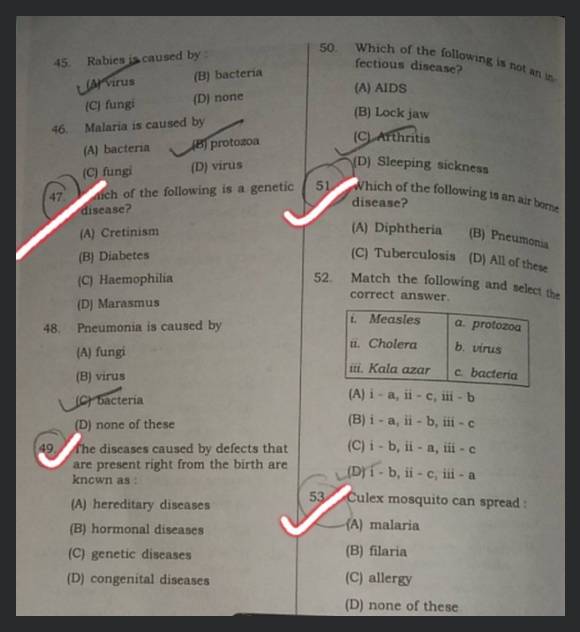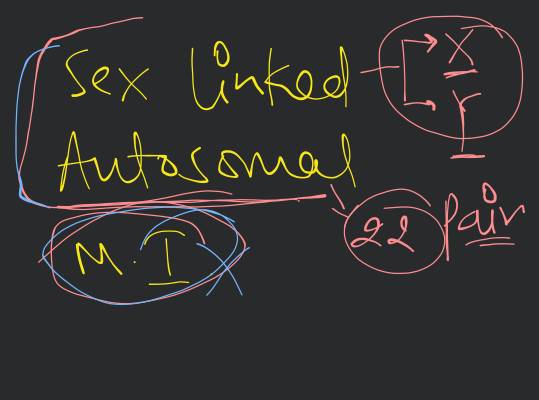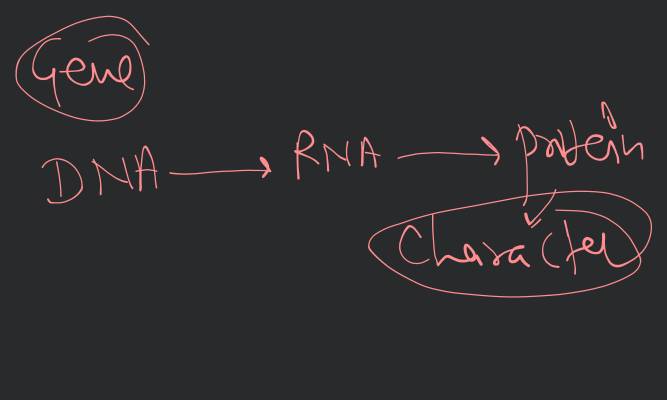Question
Easy
Solving time: 2 mins
Match the following and select the correct answer:

 Text solution
Text solution Verified
Verified
The correct answer is: A-3, B-4, C-1, D-5, E-2
Choanocytes: collar cells in porifera
Cnidoblasts: stinging cells in coelentrates
Flame cells: osmoregularity cells in platyhelminthes
Nephridia: excretory structure in annelida
Comb plates: locomotive structure in ctenophora
Choanocytes: collar cells in porifera
Cnidoblasts: stinging cells in coelentrates
Flame cells: osmoregularity cells in platyhelminthes
Nephridia: excretory structure in annelida
Comb plates: locomotive structure in ctenophora
Was this solution helpful?
126
Share
Report
Found 8 tutors discussing this question
Discuss this question LIVE
12 mins ago

One destination to cover all your homework and assignment needs
Learn Practice Revision Succeed

Instant 1:1 help, 24x7
60, 000+ Expert tutors

Textbook solutions
Big idea maths, McGraw-Hill Education etc

Essay review
Get expert feedback on your essay

Schedule classes
High dosage tutoring from Dedicated 3 experts
Practice questions from Modern ABC Biology Class 11 Part 1 (Modern ABC)
View morePractice more questions from Animal Kingdom
Question 1
Medium
Views: 5,614
(i) They are exclusively marine, radially symmetrical, diploblastic organisms with tissue level of organisation.
(ii) Body bears eight external rows of ciliated comb plates, which help in locomotion.
(iii) Digestion is both extracellular and intracellular.
(iv) Reproduction takes place only by sexual means.
Which of the following phylum is being described by above statements?
Question 2
Easy
Views: 5,889
Question 3
Medium
Views: 5,750
i. The micronucleus is used for reproduction purpose.
ii. The micronucleus plays an important role in the process of cellular regulation.
iii. Contractile vacuole is used to maintain osmotic pressure.
Practice questions on similar concepts asked by Filo students
Question 1
Views: 5,495
Question 2
Views: 5,021
Question 3
Views: 5,603
Question 4
Views: 5,426
A community of different species interacting with one another and the physical and chemical factors of their nonliving environment is called a(n)


Stuck on the question or explanation?
Connect with our Biology tutors online and get step by step solution of this question.
231 students are taking LIVE classes
| Question Text | Match the following and select the correct answer: |
| Updated On | Mar 14, 2023 |
| Topic | Animal Kingdom |
| Subject | Biology |
| Class | Class 11 |
| Answer Type | Text solution:1 Video solution: 1 |
| Upvotes | 178 |
| Avg. Video Duration | 25 min |




